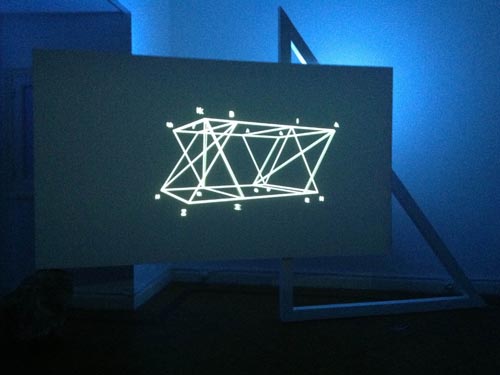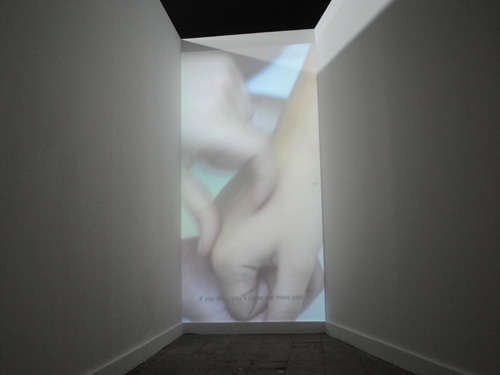
Said to be the first film ever shown in public, “Workers leaving the factory” consists of a single shot of mostly women workers hurriedly leaving the Lumiere factory in 1895. Though just 45 seconds long, the film has remained an important one for documentary filmmakers.
But what would that image look like now?
The context of Egypt with regard to labor is particularly charged. Though the 25 January revolution is commonly described as a youth revolution, several actors and commentators agree that it was the labor movement that played a pivotal role. In the few years preceding it, labor struggle intensified to a level not seen for decades, and arguably in large part made the revolution possible.
But despite the centrality of Egypt’s labor movement, it is less associated with the revolution, and this is reflected in how it is less present in representations of the revolution. Where it is represented, it is the labor movement, rarely labor itself. For all the focus on labor in photojournalism, “you get a signal of labor, but you don’t actually see it,” German filmmaker Harun Farocki said during a two-week workshop held in October.
In the “Labor in a Single Shot” workshop, facilitated by Farocki and curator Antje Ehmann in Cairo at the Beirut art space, each participant made two short films, both consisting of one shot: one showing people leaving work, and the other the act of labor.
The format of a single shot elicited some qualms in the workshop, with much argument about how much can be expressed in just one shot, especially in a revolutionary context. But the hesitation seemed to fade as the workshop went on.
“After all, all forms are limited,” says Sarah Rifky, cofounder of Beirut art space. “And mostly it came to be seen as a productive constraint.”
For Nada al-Shazly, one of the participants, at first it was difficult, “but learning to work within these very specific limits, I had to think about every detail.”
Indeed, for Farocki and Ehmann, this is the point: there is greater intensity and focus. At the same time, because there is just one shot, the unpredictable and unexpected can play a greater role.
The workshop was followed by a screening of a selection of Farocki’s films last week in the framework of PhotoCairo 5 as questions about the representation of labor are recurring in his work.
Among the screened films was Farocki’s film essay “Workers Leaving the Factory” that takes the Lumiere Brothers film as a starting point, crystalizing many of the questions raised throughout the workshop: What is labor? How does one represent labor and those who carry it out? How does one not aestheticize labor? How does one close a shot of continuous work, or compose a narrative of something ongoing? And what work does the moving image do?
An exploration of Farocki’s “Workers Leaving the Factory” both explores labor and its cinematographic representations historically. As the voiceover notes, film has seen more prison gates than factory gates. In film there may be traces of labor, but less so labor itself.
The voiceover offers an austere narrative to a number of clips of workers leaving factories. They leave “as if they are propelled by an invisible force;” they are hurried, “running away, as if already they have lost too much time, as if they have somewhere better to be.”
And often in film, the camera follows them away — a point “Workers Leaving the Factory” returns to insistently. A series of scenes of several films shows someone, perhaps a lover or partner, waiting at the factory gates, and as they leave and start conversation, the camera follows, the trace of labor only pointing to its absence in cinematic representations. Perhaps it is as the voiceover in Farocki’s “As You See” suggests, that “labor is hidden away because the social order is ashamed of itself.”
In the images of workers not simply leaving, but almost pouring out of the factory, there is a sense of workers as a multitude and social force, and of the collective power of the workers. It is a reminder of one of the most well-known truisms of Marxist thought: that the main way in which capitalism contains the seeds of its own destruction is the way that it exploits workers and brings them together.
But of course, labor has in many ways changed. It has been reorganized in large part through the reorganization of space and time. No longer are workers necessarily working with the same people each day in the same place, factories are less often in residential areas, and the organization of the day is less uniform. The opening of the factory gates spilling out large numbers of workers in one go is no longer a daily occurrence.
In the shots of workers leaving the factory made by participants in the workshop, it was not always clear who the workers were, who were the visitors, and unsurprisingly there was a less unidirectional flow of people as in the classic Lumiere Brothers film.
Whereby people usually come to work and leave, during strikes when workers take over the factories, as labor journalist and Egypt Independent staffer Jano Charbel described at a discussion after the film screening, they often bring their entire families. The meaning of the factory space changes, and the social relations within it as well.
If more and more people who we might call workers are not employed by industry, but in the informal sector, how relevant is the notion of the factory? The increased attention to labor in Egypt comes not from resurgence of Marxist thought or stubborn clinging to this notion of a worker, however. It comes from a sustained and increasingly assertive labor movement that is indeed centered in industrial work.
But there remains far less organizing in the informal sector, though fishermen are now organizing themselves, and recently a domestic workers union was established. In a sense, then, the tools or means of struggle associated very specifically with particular kinds of organization of labor are being taken up more broadly.
The workshop participants describe being pushed to think about labor in different ways, whether paid or unpaid, material or immaterial. And indeed the films they made attest to this. In some, as Rifky describes it, “you immediately notice the labor, and in others it is more encrypted in the image.” But because it is part of a project about labor, the question of labor is posed by the viewer.
The pieces will be exhibited in as many of the 15 cities in which the workshop is being held as possible, organized both by the commonalities and differences, Farocki and Ehmann say, across the myriad contexts. This point of how the films will be perceived as part of a larger whole was also a recurring point of discussion throughout the workshop.
In one film, a robotic toy soldier, one of the items a street vendor is selling, crawls on the ground. Watching or reading the film in the context of the project, we think of how the toys are produced and of the vendor we barely see, but who unexpectedly shapes the film by turning the crawling soldier toward the camera.
In another, we see the guards at the Manassa — where former President Sadat was assassinated — who periodically march across, state employees performing a kind of labor that in a sense produces nothing. Or it produces nothing material at least, for this labor could be said to be part of the production of state authority.
Other films point to the labor of the camera, implicating the filmmaker in the image, and pointing to the image’s own conditions of production — questions to which Farocki’s films repeatedly return to.
A domestic worker talks to the filmmaker in one of the films as she cooks, explaining how to prepare the dish she is making. And then as she talks about the sharpness of her knife, one of the most domestic of objects, the conversation turns almost seamlessly to politics and the current events.
One shot of two construction workers has a rhythm of sound and vision, as they hammer away at a pillar with their picks in repeated movements. The challenge here, as for a number of the participants, is how to close the shot in such a way that feels like an ending, though an ending that does not point away from the continuous nature of the labor itself.
While there was an insistence in the workshop on thinking about labor multiply, there was also an insistence on labor itself more conventionally understood. A visit to a number of textile factories in Alexandria ended up being a pivotal moment in the two-week workshop, says Rifky.
Farocki’s approach is a useful reminder for all of those thinking about labor: that seeking to expand and perhaps even complicate notions of labor need not entail abandoning the more conventional associations.




